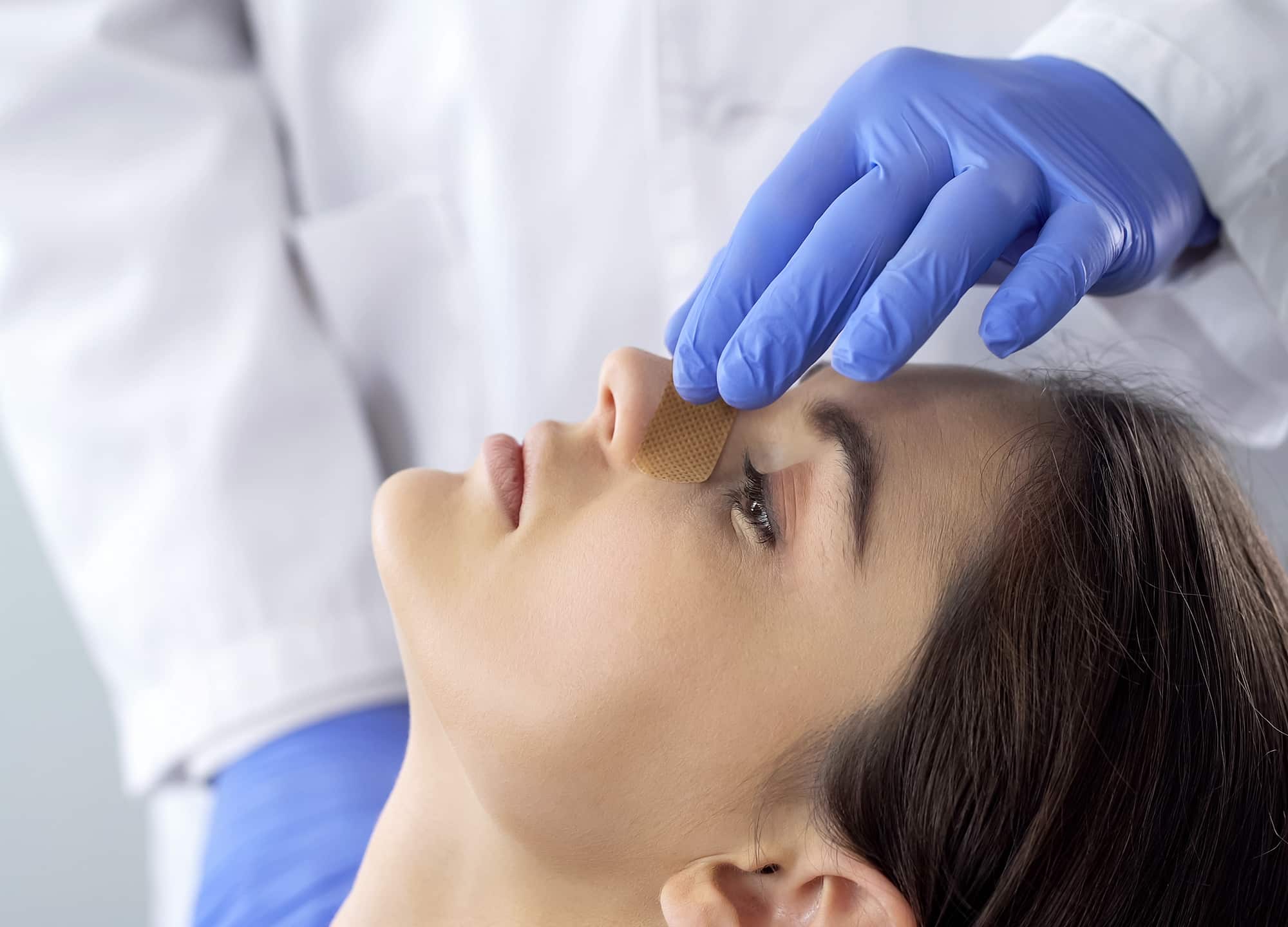You’ve researched your preferred procedure, been to multiple consultations, and confirmed your doctor of choice has the proper credentials. You’re probably feeling all set for surgery at this point—but what about recovery? Your actions in the days following your procedure are essential for ensuring you get the best possible outcome—especially for surgeries performed on the face.
Rhinoplasty—more commonly referred to as a nose job—has one of the highest revision rates (ranging from 5% to 15%); meticulous post-op care can raise your chances of a complication-free result. While initial healing is generally fairly quick, it takes about a year for the nose to be completely recovered, so you’ve got to be on your aftercare game. We asked two top doctors for their best rhinoplasty recovery rules. (Spoiler: Clueless had it right—you definitely want to avoid any activities where balls fly at your face.)
Recovery rule #1: Don’t put on any form of eyewear
Throwing on a pair of sunglasses or reading glasses might feel like second nature, but you should avoid mindlessly sliding on any form of eyewear for a few weeks after surgery. “The nasal bones are not healed in their new positions for about six weeks after rhinoplasty surgery,” says Dr. Dara Liotta, a board-certified facial plastic surgeon in New York City. Heavy glasses or glasses with tight pads that rest on the bridge of the nose could distort the healing tissue and create indentations or bumps. Guess it’s time to learn how to put in contacts.
Related: Rhinoplasty vs. non-surgical nose job: How to get the right nose for you
Recovery rule #2: Don’t pick your nose
While you shouldn’t be picking your nose anyway, it’s absolutely imperative that you refrain from this habit after surgery. Picking can reopen wounds within the nose and require another trip to the doctor. While some people have a gauze packing placed inside their nostrils post-rhinoplasty to reduce bleeding (this will keep your fingers at bay for at least a few days), you should still refrain from touching the inside of your nose after this packing is removed—no matter how tempting it is to touch the scabby area.
Recovery rule #3: Use nasal saline solution
Starting the day after your surgery (and only if you don’t have any gauze packing inside your nose), begin irrigating the nose with an over-the-counter nasal saline solution three to six times a day. Not only will this help to keep the nose clear, but it also helps to relieve some of the drying effects that surgery can have on your nasal lining.
Recovery rule #4: Skip kissing
While it might not seem too hazardous, a quick kiss might land you right back in the operating room. “Don’t kiss babies, toddlers, or dogs on the head for six weeks after surgery,” says Dr. Liotta. “Believe it or not, toddlers’ heads are a huge cause of breaks after [rhinoplasty]!” One accidental bump, and the sensitive area could break and ultimately need revision surgery—so keep your lips to yourself.
Recovery rule #5: Sleep slightly elevated
To help reduce swelling, Dr. Liotta recommends keeping your head slightly elevated and sleeping on your back for the first week after surgery. Sleep either in a reclining chair or propped up on two to three pillows, to keep your head at a higher level than your heart; this will minimize fluid buildup.
Recovery rule #6: Ice the area—but not after 48 hours
“Don’t ice after 48 hours,” says Dr. Liotta. “For the first two days after surgery, icing the bridge of the nose for about 20 minutes each hour will help to decrease the development of bruising and swelling.” In general, this time period is when bruising and swelling are at their worst. Once the swelling and bruising have developed, the body depends upon blood flow into the area to help heal, so using ice after 48 hours can actually slow the process, stresses Dr. Liotta.
Recovery rule #7: No smoking or drinking post-surgery
According to Dr. Jennifer Levine, a board-certified facial plastic surgeon in New York City, smoking and drinking can compromise your surgical results and interfere with the healing process, so don’t give in to temptation post-operation. Smoking reduces blood flow to the skin, which is essential to promote healing. Drinking alcohol, on the other hand, dilates blood vessels, which can increase the chances of bleeding and bruising after your surgery. Plus if you’re taking pain medication, it can have negative effects on the body (like cardiovascular or respiratory issues) when mixed with alcohol.
Related: Rhinoplasty Recovery Timeline – Everything You Need to Know
Recovery rule #8: Avoid bending, lifting, or straining
After any surgery, you should always take it easy and try to pamper yourself—this is your time to focus on healing, after all. Avoid bending, lifting, or straining for at least three weeks after surgery, since this can cause bleeding, increased swelling, and bruising. “At two to three weeks, [patients] can start light exercise, such as [lifting] light weights and walking,” says Dr. Levine. “I also advise patients not to plan to do any work for several days after the surgery, even if they work from home.”











